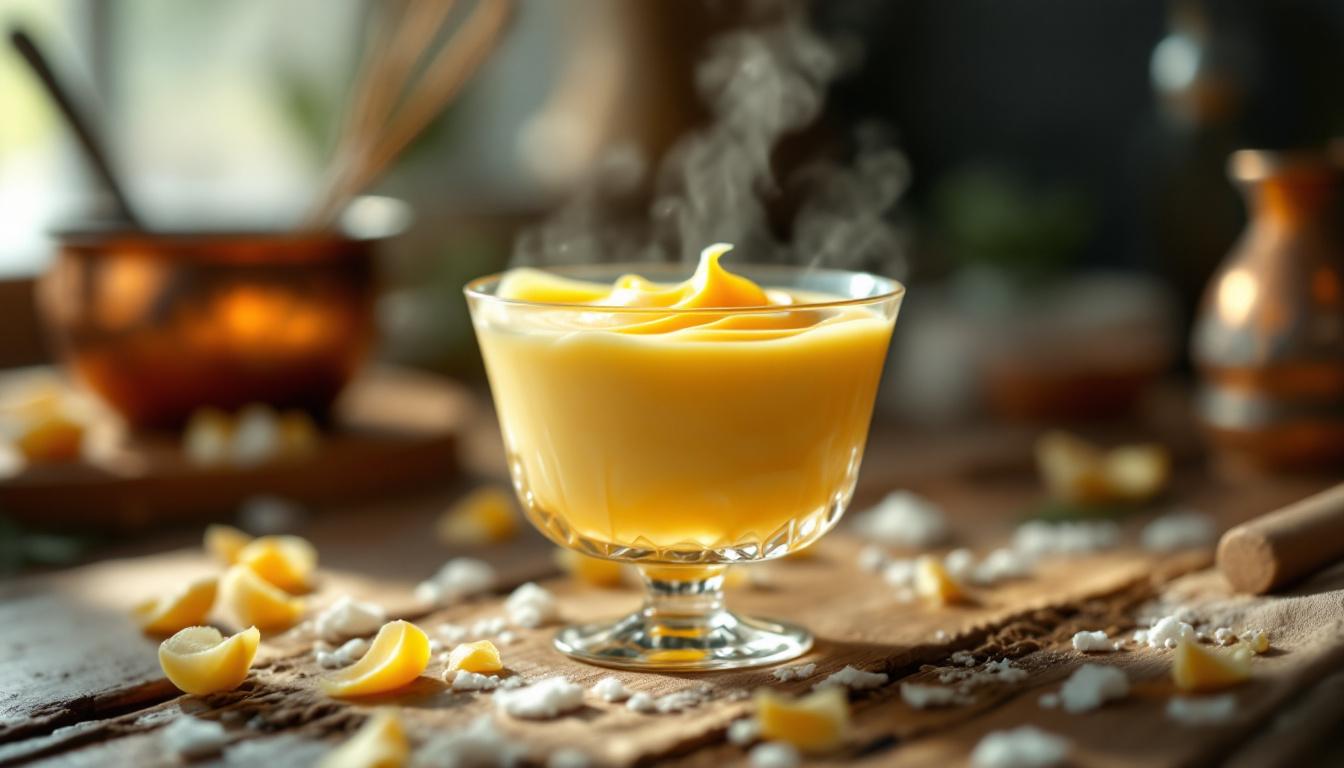I’ve always been captivated by the elegant simplicity of zabaione. During my training in Northern Italy, I watched as an 84-year-old nonna prepared this cloud-like custard using just a copper bowl and a whisk, transforming three humble ingredients into something transcendent. What struck me most wasn’t just the airy texture or the complex flavor, but how the dessert seemed to capture something essential about Italian cooking – that magic happens when technique elevates simplicity. This grandmother-style zabaione isn’t just delicious; it’s a meditation on the power of patience and precision.
The Story 📖
Zabaione (or zabaglione) has ancient origins, evolving from a restorative tonic for the sick into a beloved Italian dessert. Traditionally prepared during celebrations and holidays, this luxurious custard exemplifies how Italian grandmothers transformed everyday ingredients into extraordinary creations. What makes authentic zabaione special is its ethereal texture – somewhere between a mousse and a sauce – achieved through nothing more than careful whisking and gentle heat.
Ingredients Spotlight 🧪
The beauty of traditional zabaione lies in its minimalist approach:
- 4 large fresh egg yolks – Preferably organic and at room temperature for better volume
- 4 tablespoons (50g) granulated sugar – The ratio of 1 tablespoon per yolk is crucial
- 4 tablespoons (60ml) Marsala wine – Sweet Marsala is traditional, but you can substitute with Moscato, sweet Riesling, or even something complementary to another dessert
Each ingredient plays a vital role: egg yolks provide structure and richness, sugar stabilizes the emulsion, and Marsala contributes both flavor and the alcohol that helps cook the eggs safely.
Step-by-Step Guide 📝
- Set up your bain-marie: Fill a saucepan with 2-3 inches of water and bring to a gentle simmer. Select a heatproof bowl that fits over the pot without touching the water.
- Combine yolks and sugar: In your bowl, vigorously whisk the egg yolks and sugar for 3-5 minutes until pale and noticeably thickened.
- Add the Marsala: Gradually pour in the wine while continuing to whisk.
- Apply gentle heat: Place the bowl over the simmering water and whisk continuously for 10-15 minutes. This is where transformation happens – the mixture will double in volume and become silky.
- Check for doneness: The zabaione is ready when it holds ribbon-like trails when the whisk is lifted. It should reach approximately 82°C (180°F) for food safety.
- Serve immediately: Pour into individual glasses or cups while still warm.
Chef’s Note: The continuous whisking isn’t just tradition – it’s science. The constant movement prevents the eggs from scrambling while incorporating air that creates the signature texture. I’ve found a figure-eight motion with the whisk works best for maximum aeration.
Expert Techniques 🛠️
The difference between good and transcendent zabaione lies in technique. Use a copper or stainless steel bowl if possible – copper especially helps stabilize egg foams. Never let the bowl touch the simmering water, which could overheat the delicate mixture. The ribbon test is your most reliable indicator: when you lift your whisk, the falling mixture should briefly hold its shape on the surface before melting back, similar to writing your initial on the surface.
If you’re looking for a winter warming technique similar to this careful heating method, you might appreciate how gentle heat transforms tough cuts in Beef Bourguignon.
Presentation & Pairing Ideas 🍽️
Traditionally, zabaione is served warm in small glasses, perhaps with a light dusting of cocoa or cinnamon. It pairs wonderfully with crisp cookies like homemade madeleines or alongside Panettone during holidays. For a summer variation, chill the zabaione and serve with fresh berries.
For an elegant dinner finale, consider creating individual servings in vintage teacups or espresso glasses, garnished with a chocolate-dipped strawberry or amaretti cookie. The contrast between the silky custard and crisp cookie creates textural magic, similar to how the contrast works in Bouchée à la Reine.
Make this recipe your own by experimenting with different fortified wines or adding a personal twist like orange zest or vanilla bean. The foundations remain the same, but like all great cooking, zabaione welcomes your creative touch while honoring its timeless essence. Just remember – patience and attention transform the ordinary into the extraordinary, one gentle whisk at a time. 🍮✨
